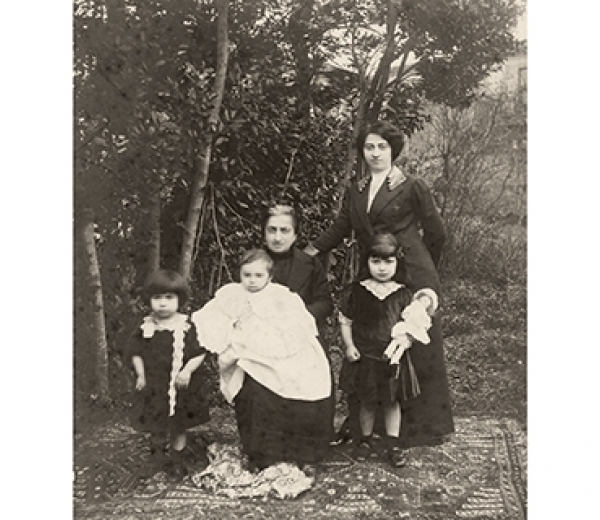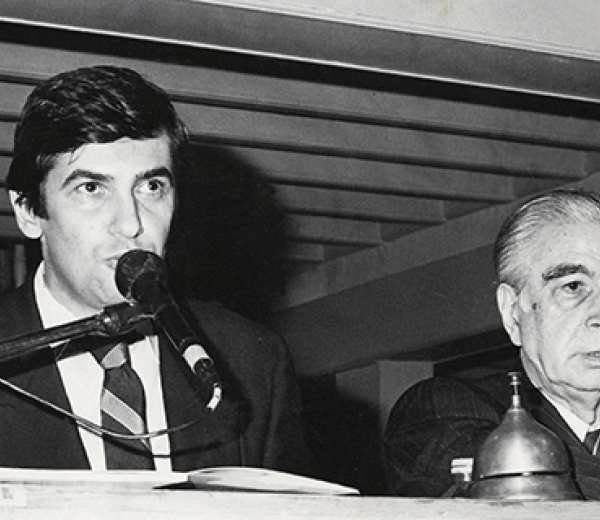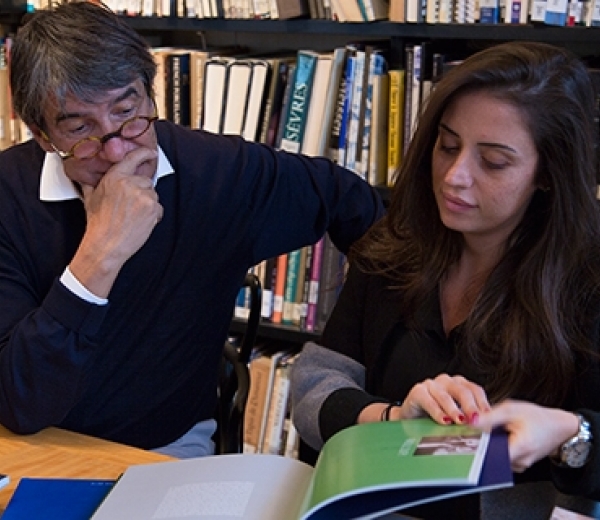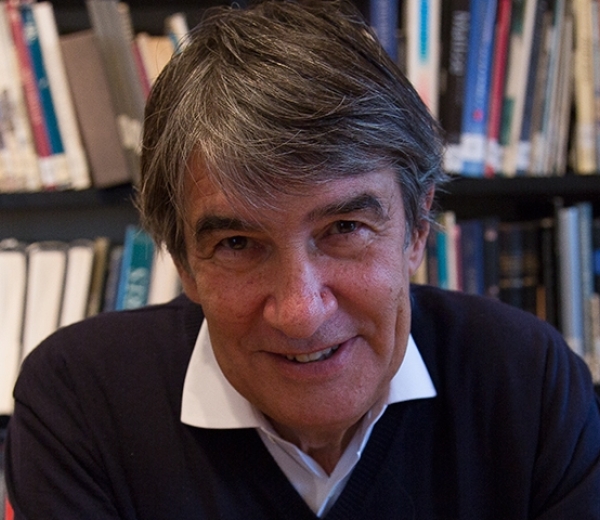Raffi Portakal
“I was lucky that my grandfather and father had already made a name for themselves and the family. I’m the third generation in the business. It’s not an easy job. When you consider that our art house is older than the Republic of Turkey itself, you can imagine how difficult it’s been to keep it going in such a tricky market,” Raffi says.

|
Aret Portakal auctions the famous collection of Satvet Lütfi Tozan. Raffi Portakal walks among the crowd, displaying collection pieces. 1974. |

|
Raffi’s paternal grandmother Vergine Portakal (seated) with her children Aret, Ashkhen and Rita |
After Raffi’s mother graduated from school in the 1940s, she wanted to continue on to college. But there were no institutions of higher education in Ordu. In response to the pleas of the girl and her family, Manig’s father sent her to study at a medical school attached to the American Hospital.
This decision shaped the family’s destiny. It was at the hospital that Manig treated Aret Ohanes for typhus.

|
Boghos agha, Raffi Portakal’s maternal grandfather, and his family in Ordu |

|
Raffi Portakal serves as auctioneer while his father Aret assists |

|
Raffi Portakal and his daughter Maya |
The Portakal Art and Auction House conducts at least two auctions per year. “We want our name to grow in stature with each auction, to find quality items that are unique that you cannot find in the market or elsewhere. The Portakal family has always valued prestige over money. This is the unwritten law of the family and it’s a kind of sickness,” Raffi explains. In addition to organizing exhibits and auctions, the art house continues to publish numerous books and catalogues.

